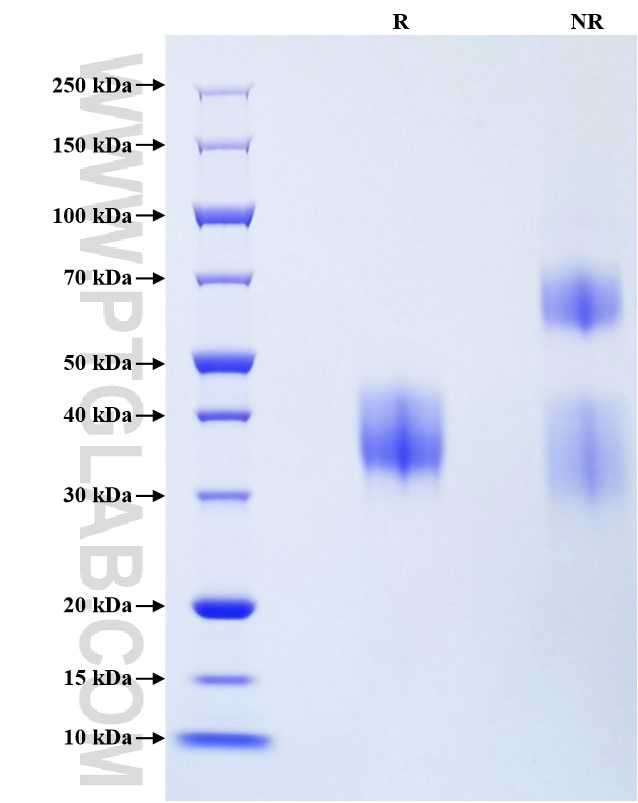Recombinant Mouse Erythropoietin/EPO protein (His Tag)
Species
Mouse
Purity
>90 %, SDS-PAGE
Tag
His Tag
Activity
not tested
Cat no : Eg0265
Validation Data Gallery
Product Information
| Purity | >90 %, SDS-PAGE |
| Endotoxin | <0.1 EU/μg protein, LAL method |
| Activity |
Not tested |
| Expression | HEK293-derived Mouse Erythropoietin protein Ala27-Arg192 (Accession# P07321) with a His tag at the C-terminus. |
| GeneID | 13856 |
| Accession | P07321 |
| PredictedSize | 22.7 kDa |
| SDS-PAGE | 32-45 kDa, reducing (R) conditions |
| Formulation | Lyophilized from 0.22 μm filtered solution in PBS, pH 7.4. Normally 5% trehalose and 5% mannitol are added as protectants before lyophilization. |
| Reconstitution | Briefly centrifuge the tube before opening. Reconstitute at 0.1-0.5 mg/mL in sterile water. |
| Storage Conditions |
It is recommended that the protein be aliquoted for optimal storage. Avoid repeated freeze-thaw cycles.
|
| Shipping | The product is shipped at ambient temperature. Upon receipt, store it immediately at the recommended temperature. |
Background
Erythropoietin (EPO) is a glycoprotein hormone that regulates the production of red blood cells and biosynthesis of hemoglobin. The predominant expression of this gene shifts from the liver during fetal development to kidney in adults, and and the secreted protein will travel through the blood stream to reach to the bone marrow to stimulate hematopoietic stem cell differentiation to RBC. EPO binds to the cognate EPO receptor (EPOR) on erythroid progenitor cells, thus preventing apoptosis and stimulating their differentiation and maturation into erythrocyte. However, EPO protein and its receptors have also been shown to be cytoprotective in extra-hematopoietic tissues including the retina tissue. A complete lack of erythropoietin causes embryonic lethal anemia in mice. The conditional inactivation of erythropoietin in adult mice results in a chronic, normocytic and normochromic anemia.
References:
1. Chateauvieux S. et al.(2011) Biochem Pharmacol. 15;82(10):1291-303. 2. Caprara C. et al.(2014) Mol Vis. 20:307-24. 3. Brines M. et al. (2004) Proc Natl Acad Sci U S A. 101(41):14907-12. 4. Dis Model Mech. et al. (2010) Dis Model Mech. 3(11-12):763-72.

